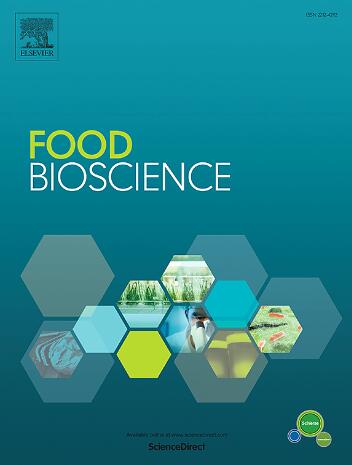Salacia as a functional bioactive food ingredient: Insights into dietary phytonutrients, phytochemistry, health-promoting attributes and innovation potential
IF 4.8
1区 农林科学
Q1 FOOD SCIENCE & TECHNOLOGY
引用次数: 0
Abstract
Salacia-based dietary supplements and health foods have been gaining popularity due to the accumulation of bioactive compounds commonly practiced in traditional medicine and the human diet. This review aims to discuss the available evidences on the distribution, botanical characteristics, dietary phytonutrients, phytochemicals, health-promoting attributes, and innovation potential of Salacia species in the food and pharmaceutical industries. The nutritional value of Salacia species is defined by its proximate components, which include carbohydrates, proteins, sugars, fiber, lipids etc, as well as its elemental composition, vitamins, and carotenoids present in their different parts. Phytochemical investigations revealed the presence of 645 phytochemicals from diverse groups, wherein the majority are terpenes. Crude extracts of fresh and dry plant parts and isolated compounds have been reported to exhibit a broad spectrum of health-promoting benefits, including lowering blood sugar, protecting the liver, antioxidant, lipid-lowering, and weight loss properties. This review revealed that Salacia is a rich source of dietary supplements and phytoconstituents that can be employed as multi-functional ingredients to develop health-promoting food formulations.

作为一种功能性生物活性食品成分:对膳食植物营养素、植物化学、健康促进属性和创新潜力的见解
由于传统医学和人类饮食中普遍存在的生物活性化合物的积累,以沙拉为基础的膳食补充剂和健康食品越来越受欢迎。本文综述了Salacia的分布、植物特性、膳食植物营养素、植物化学物质、健康促进特性以及在食品和制药工业中的创新潜力等方面的研究进展。莎拉西亚树的营养价值是由它的近似成分决定的,包括碳水化合物、蛋白质、糖、纤维、脂类等,以及它的元素组成、维生素和类胡萝卜素存在于它们的不同部分。植物化学研究发现存在645种来自不同群体的植物化学物质,其中大多数是萜烯。据报道,新鲜和干燥植物部分的粗提取物以及分离的化合物显示出广泛的促进健康的益处,包括降低血糖,保护肝脏,抗氧化,降脂和减肥特性。研究表明,Salacia是一种丰富的膳食补充剂和植物成分来源,可作为多功能成分开发促进健康的食品配方。
本文章由计算机程序翻译,如有差异,请以英文原文为准。
求助全文
约1分钟内获得全文
求助全文
来源期刊

Food Bioscience
Biochemistry, Genetics and Molecular Biology-Biochemistry
CiteScore
6.40
自引率
5.80%
发文量
671
审稿时长
27 days
期刊介绍:
Food Bioscience is a peer-reviewed journal that aims to provide a forum for recent developments in the field of bio-related food research. The journal focuses on both fundamental and applied research worldwide, with special attention to ethnic and cultural aspects of food bioresearch.
 求助内容:
求助内容: 应助结果提醒方式:
应助结果提醒方式:


